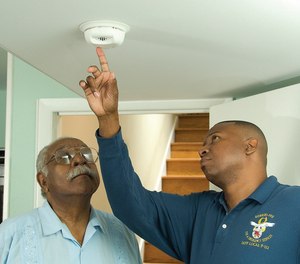
Talk to your municipality now to be a part of the action plan for Community Development Block Grant Program funds, administered by HUD
Since 1974, the Community Development Block Grant Program (CDBG) administered by HUD has provided grants to eligible units of general municipal government for a wide range of activities that facilitate revitalization of local communities.
The CDBG program is one of the longest continuously run programs at HUD. The program currently provides annual grants on a formula basis to 1209 general units of local government and states.
In recent years, competition for these funds has intensified as needs have increased and other sources of funding have diminished. In the past, some fire and EMS departments have successfully accessed the CDBG program to assist them in financing several qualified projects.
CDBG is an important tool for helping local governments tackle serious challenges facing their communities. The CDBG program has made a difference in the lives of millions of people and their communities across the country.
The annual CDBG appropriation is allocated between states and local jurisdictions called "non-entitlement" and "entitlement" communities respectively. Entitlement communities are comprised of central cities of metropolitan statistical areas (MSAs); metropolitan cities with populations of at least 50,000; and qualified urban counties with a population of 200,000 or more (excluding the populations of entitlement cities). States distribute CDBG funds to non-entitlement localities not qualified as entitlement communities.
HUD determines the amount of each CDBG grant by using a formula comprised of several measures of community need, including the extent of:
Over a one, two or three-year period, as selected by the grantee, no less than 70 percent of CDBG funds must be used for activities that benefit low and moderate-income persons. In addition, each activity must meet one of the following national objectives for the program:
A percentage of CDBG money may be used by municipalities for public services, including fire, police and EMS, along with a host of other initiatives like daycare programs and public health centers. In the past, fire departments have used this money to build or renovate stations and to assist in purchasing equipment. Departments have also used it for fire prevention programs directed toward low and moderate-income households. These programs have included door-to-door safety inspections and smoke alarm distribution.
If you are interested in accessing CDBG funding, you should initiate dialogue with your state, county or local planning or development agencies without delay. Eligible municipalities must develop an action plan for using their CDBG funds. To develop this plan, they must have public hearings and allow citizen input. In other words, if you don’t approach your local government with your request, they may simply develop their CDBG action plan without you.
Before approaching your municipality, I suggest that you develop a list of possible initiatives you would like to present for consideration by your local government. Then create a short program narrative in letter form. This should include a brief description of the project, including a schedule of activities, a project budget and a concise narrative describing the benefits the community will obtain from your project.
Once completed, promptly deliver this letter to the appropriate person in your municipality in order to be considered for this opportunity. During this visit, take a minute to inform them about your request and inquire when your municipality is having a public hearing for the CBDG process. Attend this meeting and get your request on the public record. By the end of this process, you should have some idea if your project will be considered for inclusion in the community’s action plan to HUD.
Copyright © 2025 FireGrantsHelp.com. All rights reserved.
